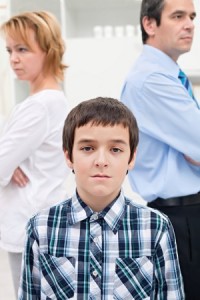 The process of trauma recovery includes developing a narrative to one’s history, compartmentalizing who is accountable for what, and integrating old material into a new paradigm. Intrafamilial abuse, particularly child abuse, is often layered and complex. The locus of the early stages of the work tends to be the perpetrator of physical, sexual, or emotional injury. However, throughout the progression those who failed to protect slowly come into focus.
The process of trauma recovery includes developing a narrative to one’s history, compartmentalizing who is accountable for what, and integrating old material into a new paradigm. Intrafamilial abuse, particularly child abuse, is often layered and complex. The locus of the early stages of the work tends to be the perpetrator of physical, sexual, or emotional injury. However, throughout the progression those who failed to protect slowly come into focus.
Survivors express uncertainty around the parent who did not harm them but did not protect them either. As therapists, our energy is directed towards ensuring that the burden of abuse lies in the hands of the perpetrator. Clarity and relief are common responses to unraveling culpability.
The circumstances under which there is a nonoffending parent (or community) who also failed to protect a child can complicate recovery. Clients report strong feelings towards those who did not keep them safe and express confusion about who or what this person is. “Are they an abuser? Did they love me? If they did how could they have allowed this to happen? How can you watch your own child being abused and not intervene? Is there something wrong with me?”
Abuse in its various forms can sometimes be less convoluted than the failure to act, respond, or protect. It is a complex endeavor to absorb exactly how one can avoid acting in response to someone harming a child. Professionals such as teachers, therapists, or anyone who has regular contact with children are required to report suspected abuse.
In some states, law enforcement is required to intervene on some level with domestic violence, while child protective services views domestic violence as a threat to the well-being of the children in the home. Implicit in such requirements is that there is some culpability in failing to protect. Yet defining nonoffending parents can be arduous for both clients and therapists.
Perhaps our task as helping professionals is to develop our own understanding of parents who, for whatever reason, do not or cannot protect their own children. I often find myself aligned with my clients’ confusion. While not always completely clear or simple to define, categorizing abusive acts as wrong seems more clear than failure to protect, and even more so if the person who did not intervene was a parent.
There appears to be some collective agreement that those outside of the family have a responsibility in safeguarding those who cannot defend themselves. It feels a bit more muddled in applying these rules to family members. How do we define a parent who is otherwise loving and warm but has knowledge of the abuse and does not intervene? Even if the parent is disengaged or emotionally absent, how do we work with our clients in defining them? Is a failure to act a form of abuse in itself, or is the nonoffending parent a victim as well?
The ethics of community response to failure to protect remains convoluted. In addition, working with our clients in understanding this aspect of their story is a delicate pursuit. The circumstances of the client’s story can occasionally provide the answers to our questions. Most of the time, context fosters few explanations. Perhaps in this case, the conclusion lies within the question — bemusement exists because this is a complex issue.
Normalizing a lack of clarity and difficulty in compartmentalizing the nonoffending parent or family member is difficult for all of us, not only the survivor. Hopefully, acknowledgment of the layers and intricacies of intrafamilial abuse is a starting point for all of us, and at least survivors have a partner in their journey for answers.

The preceding article was solely written by the author named above. Any views and opinions expressed are not necessarily shared by GoodTherapy.org. Questions or concerns about the preceding article can be directed to the author or posted as a comment below.


 Defining the Role of the Nonoffending Parent in Childhood Abuse
Defining the Role of the Nonoffending Parent in Childhood Abuse Childhood Abuse: Finding Support and Honoring Your Recovery Process
Childhood Abuse: Finding Support and Honoring Your Recovery Process Childhood Trauma and the Mind-Body Connection for Adults
Childhood Trauma and the Mind-Body Connection for Adults

Please fill out all required fields to submit your message.
Invalid Email Address.
Please confirm that you are human.
Leave a Comment
By commenting you acknowledge acceptance of GoodTherapy.org's Terms and Conditions of Use.